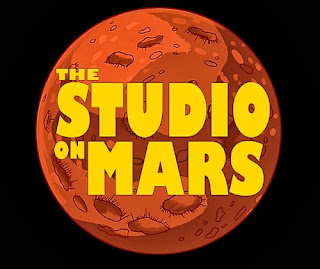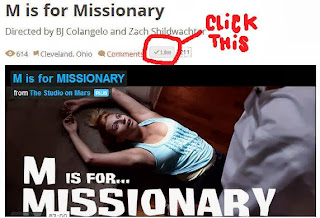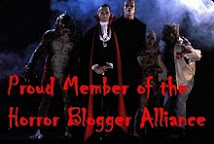Somewhere among my Top 10 favorite movies of all-time (probably later than number 6 but earlier than number 10) sits Frank Capra's slapstick comedy
Arsenic and Old Lace. It is a silly film - full of murderers, lunatics, and one seriously confused Cary Grant - but it also contains a line of dialogue that has long stuck in my head as a bold moment of truth. The most murderous member of the film's family, who looks like Boris Karloff, has decided he wants to kill somebody and scolds his assistant (played by Peter Lorre) about what happens when he makes up his mind. Lorre's character, Dr. Einstein, responds with a sigh, saying "
Yes, yes, I know. When you make up your mind, you lose your head."
This sticks with me because I think there's a type of personality that is explained by this statement, and I don't think it's just for murderers with the face of Frankenstein's monster. It's a great way to explain addicts. They're people who get attached to the idea of something - whether it be alcohol, drugs, food, or anything else - and who then find themselves trapped by their own desires as they chase what they are focusing on without regard for anything else.
What does this have to do with
Doctor Sleep, the sequel to
The Shining that Stephen King has finally offered readers? Well, I think that Doctor Sleep is a book by a person who makes up his mind and loses his head (or at least did, back in his drinking days), a book for people who make up their mind and lose their head (people like me, who avoided vices like alcohol and became junkies for horror stories instead), and - most importantly - a book about people who are dangerous because they can make up their mind and lose their head.
First and foremost among these people is Dan Torrance, formerly Danny, the child who survived The Overlook Hotel in the 1970s and who grew up to face everything else life had to offer. King presents Dan first as a defeated child - dealing with the ghosts of The Overlook while trying to get help from his mother and the cook who also "shone" - and then as an adult who hit bottom and had to fight his way back to the top. Dan's bottom - an AA term that King will explain, along with many other loving and accurate descriptions of Big Book meetings - is handled marvelously by the author, and this early book segment (which was suggested, according to King's post-novel notes, by his son Owen) really sets the tone for Dan's journey through the book. It's difficult to see this grown version of Dan Torrance - especially as the book covers more than 30 years of his life - and remember the little boy from The Shining (then again, everything about a 36 years later sequel is a little difficult), yet King does a good job of making Dan a new character while reminding us of his first journey into horror just often enough.
After he bottoms out, we're treated to Dan's search for redemption as he tries to kick his habit and use his gifts in a positive way. This is not an easy task for someone with his afflictions (physical, mental, and supernatural afflictions - if you're counting along at home), but he finds the motivation thanks to some help from his old friend Tony, some new friends in Alcoholics Anonymous, and (most notably) a young girl named Abra.
Little Abra Stone, much like Danny Torrance when he was a child, has the gift of The Shining. We meet Abra as she is born, and some of the book's best segments relay her developing talents as she grows up. Though she's still developing as a teenager when the book hits its dramatic and horrific high points, King shows us enough to make sure we know from an early age (including a bizarre sequence where King connects the infant Abra to the 9/11 attacks) that she has powers that surpass what we've seen from others in the book. Once we see everything Abra can do we realize that Dan and her are a dangerous combination when they get together. King plays upon this, making it easy for readers to get behind these two characters.
The antagonists that Dan and Abra must face are a group of nomadic, soul-sucking, vampire types called The True Knot, a somewhat silly concoction of ageless killers that feed on the essence - or "steam" - of children with Shining powers. The idea of The Knot doesn't really work too well, but is strengthened by its leader, a juicy villainess called Rose the Hat - thanks to her trademark top hat, which becomes one of the book's more enduring visuals. All the side members of the Knot are a little underdeveloped (one character gets a great introduction very early in the book and then becomes second fiddle for the rest of the journey, the rest are caricatures of horror sidekicks) but Rose the Hat is an imposing mental presence who is given a lot of depth by the author. King tries to build up Rose as a devilish talent for evil, yet some of the sequences where he shows us the insides of the True Knot camp and Rose's struggles to lead them are interesting because they make these character seem human. She's ruthless and murderous, but she's also confused and frightened of death - just like we are. Rose the Hat is one character from King's universe that I definitely want to see more of, if only because the author does such a good job of showing both her strengths and weaknesses. There's an argument that could be made about her and Dan being more similar than Dan and Abra are, but that's a much bigger discussion for a different day.
As you can see, there's a lot going on in King's book, and sometimes it felt like he left a storyline behind too easily to tell us something different. For example, I got to a point where I wanted more of Dan's struggles with alcohol and the ghosts of the Overlook, but then King offered descriptions of the Knot and their murderous acts. Or, I got to a point where I wanted to make sense out of Rose the Hat, and just then King dropped a newborn named Abra into the story. It was hard to keep track of where Doctor Sleep was going in the first few chapters, but once King started bringing things together - even tipping his cap to the theory of relativity in a not-so-subtle manner - it became obvious that all of these threads were about to come together.
Things start to clear up around the half way point of the book, but King still has some nice twists up his sleeve as he moves through the final act. Some of the major plot developments are blatantly obvious, but King finds neat ways to surprise us just when we think things are going the other direction. Characters who seem to be gaining power are abruptly killed off, schemes that are spelled out in one manner suddenly become something else, and even a few visitors from The Overlook Hotel make memorable returns. It all adds up to a wildly entertaining, if not ridiculous, final confrontation that wraps the story up rather quickly. It's a chaotic and unpredictable sequence - King even throws in an old man doing a cartwheel (I presume the kitchen sink was busy) - but it features some great moments that help make the ending work pretty well. The whole conflict is probably best summed up by the use of a character from The Shining in one crucial moment - don't worry, I don't dare spoil this one! - which is an out-of-the-blue idea that shouldn't work but had me pumping my fist and cackling like a madman because it was such a fun move by the author.
Doctor Sleep isn't a masterpiece by any means - there's too much going on (including a large number of distracting pop culture references, even for King) and very few moments that match the shock value of King's earlier work - but it works because the minds of the lead characters are opened up to us and because each of the main characters has the ability to surprise us. They are each powerful and unstable characters who could "lose their heads" at any time, which makes Doctor Sleep an interesting and unpredictable new addition to King's universe of horror.









































